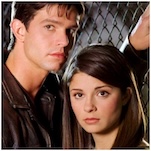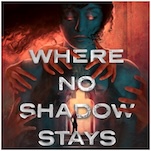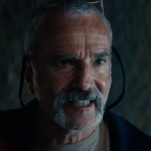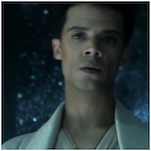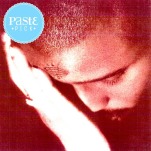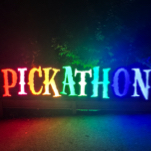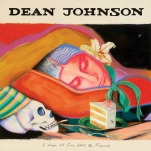Doom Sets a Standard For Nintendo Switch Ports

When Doom was first announced for the Nintendo Switch, my reaction was: “wait, thatDoom?” Nintendo, since the Wii era, has always received the short end of the stick when it comes to third party support, due to their comparatively less powerful hardware. The possibility of a proper version of Doom on the Switch excited me—it was a potential key to unlock the possibility of triple-A third party games on a console you can take on the go.
My problem is that I am a young whippersnapper who considers myself to be a child of Halo and Call of Duty, perhaps a decade too late for the original Doom. I am used to carrying two weapons, regenerating health and a sprint button. Imagine my surprise as I held my Switch in the beginning of the game and pushed forward on the joystick, making Doom Guy move at a quick pace that I was not used to as a “veteran” modern first-person shooter player.
This is a fast fucking game.
It took me about five minutes to realize that Doom was the videogame equivalent of the film Mad Max: Fury Road. Both titles revive old concepts and rebuild this old-school sensibility with modern day production values. There’s a simple premise—in this case, kill every damn demon you see, as a “Man With No Name”-like protagonist. The action is relentless, the visuals ridiculous (not to mention very brown and red), and the violence totally brutal. Sometimes as I zoomed through these environments infested with hell monsters and blaring heavy metal music, I questioned if I was born in the right era.
This is a videogame where you have to keep moving. Instead of lavish set pieces with predetermined events, Doom sets up playgrounds with plenty of horizontal and vertical space, ammos, shield and health pickups and various power-ups that encourage players to zip around the entire area. The game’s signature “Glory Kills” to stumbling enemies are certainly rewarding with the goodies that demons drop, but the animations begin to tire after some time. Still, with all of the firepower and the variety of enemies the game throws at you, Doom encourages fast and creative thinking, something that many modern shooters don’t provide as much.
With the Switch version specifically, the game runs at a solid 30 frames-per-second. Having not played the original title in its original frame rate, I found the visuals to still be quite impressive—once I got out of the more claustrophobic corridors of some of the levels, I found myself in outdoor Mars environments with quite a nice view. This extended to the campaign levels in Hell as well. Monsters up close look detailed and display some flashy graphical effects. However, during busy and crowded firefights, I found that the game’s frame rate chugged at a noticeably slow rate, especially during the latter half of the game. On occasion, I encountered some horrible audio glitches that produced brief but unbearable droning noises that sometimes ended with the game’s music and many sound effects muted afterwards. Not to mention, offensively small on-screen text required an electron microscope to read, and long loading times made me feel like I was in Hell at times.
I initially planned to alternate between playing the game undocked and then docked, but eventually stuck with just playing it on my television. The game still looks quite good in handheld mode, but the graphical and resolution downgrade seems a little more apparent on the small screen—everything just looked blurrier. The ergonomics of the smaller and more limited Joy-Con control sticks made aiming a bit more difficult in that playstyle—from my experience, the Pro Controller is undoubtedly more suited for this type of game. Still, the fact that I was able to take this HD game anywhere was a novelty that I enjoyed by itself, even if I would prefer the larger screen. The fast-paced gameplay structure divided by different enemy encounters makes it suitable for quick pick-up gaming sessions.
The game’s multiplayer mode was fairly barebones, but it hearkens back to simpler times, with games like Unreal Tournament (I’m not too young to have experienced that before). It retains the same relentlessly fast gameplay of the campaign, albeit with less satisfying results. Still, with online shooters short in supply for the Switch, the multiplayer could serve as a decent distraction for those tired of the colorful and family-friendly aesthetic of Splatoon 2. The game’s Arcade mode is a fine incentive to get back into the single player—with a score system, and all weapons and abilities unlocked from the start, the already ridiculously fast gameplay somehow gets faster and more ridiculous.
For previous owners of the 2016 videogame, there are few reasons to own this version as well, unless the novelty of the portability is a massive point of appeal. For Nintendo fans such as myself who may never have experienced the game before, it’s an easy recommendation. The game has this inherent desire to show off “how it used to be done” compared to modern shooters, and the results shouldn’t disappoint. Whereas the Wii and Wii U were “little engines that could” with software libraries riddled with shovelware and janky ports, Doom is a thesis statement for real third-party support on the Switch—no jank to be found here. Despite a few wrinkles to iron out (audio glitches) and some compromises (lower textures, plus the SnapMap editor is not in this version), it is totally evident that id Software and Panic Button put in the work on this port.
Doom for Nintendo Switch is a technical feat. Come for the shooting, stay for the heavy metal.
Doom for Nintendo Switch was developed by id Software with Panic Button. The game was previously released on PC, PlayStation 4 and Xbox One.
Chris Compendio is a Paste intern and a Nintendo enthusiast. Visit his own personal Hell by following him on Twitter @Compenderizer.


